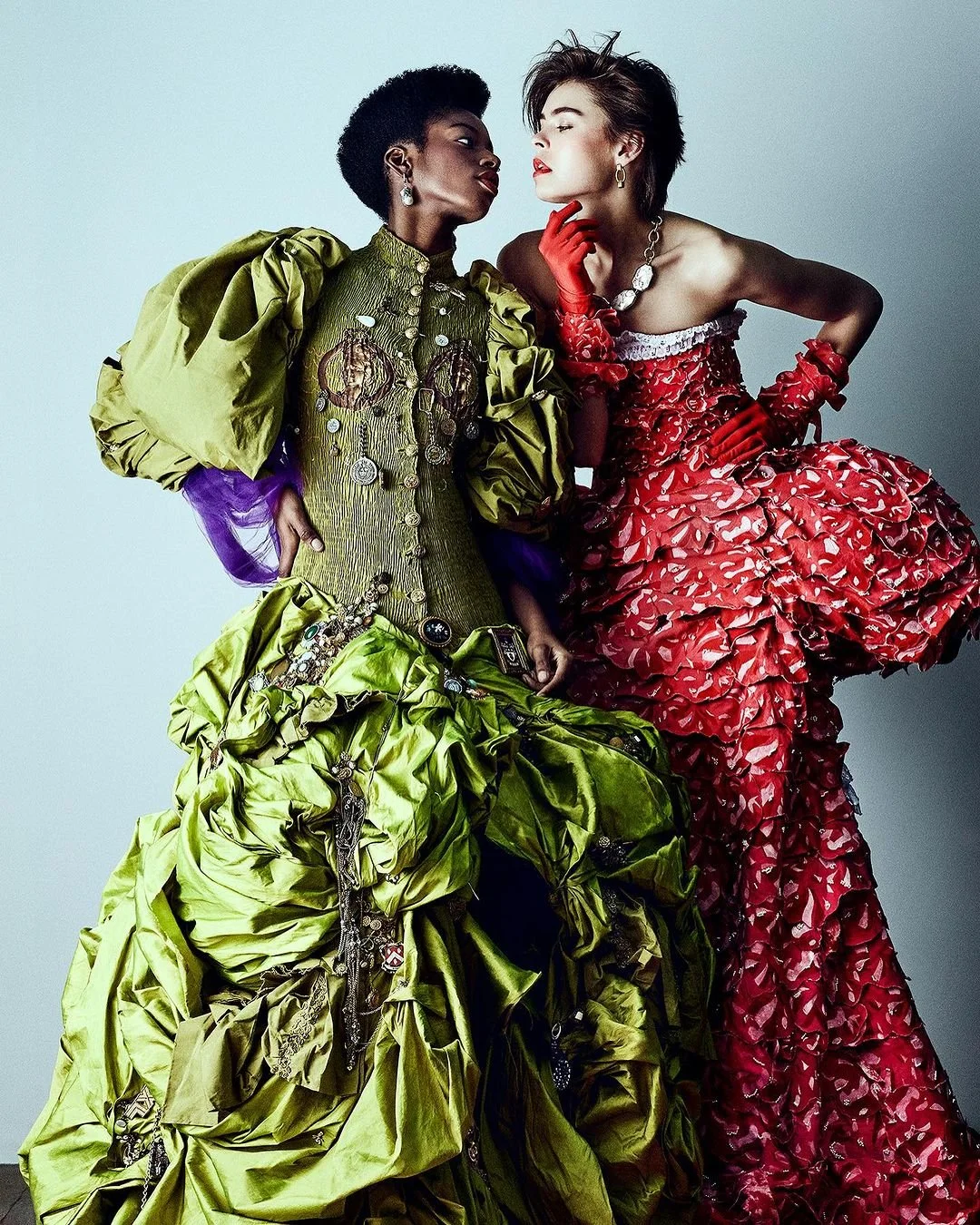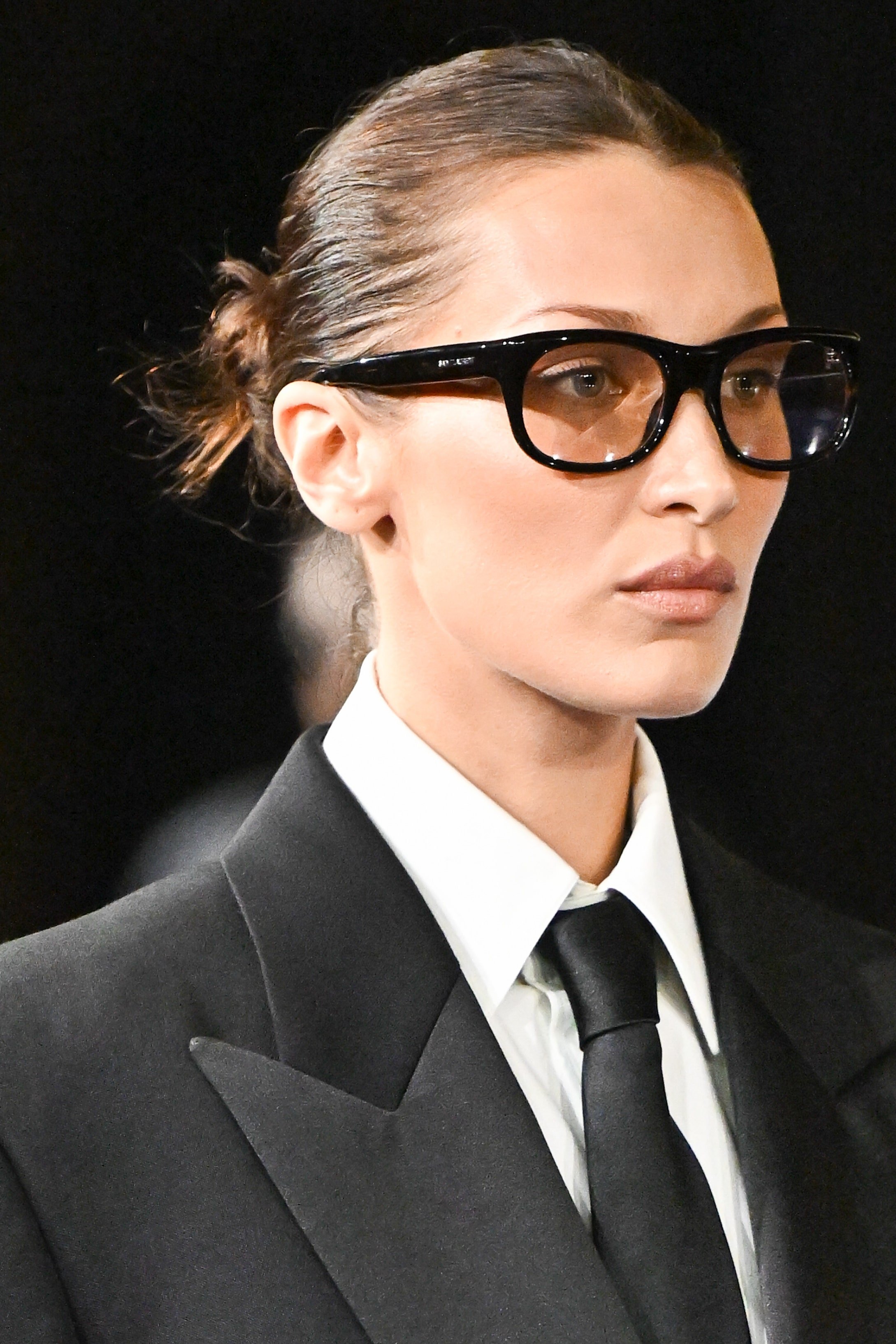Genderless
Fluid and non-binary, it diminishes the borderlines of familiarity and introduces comfort steaming from the senses. Unisex fashion is at its peak, offering unlimited possibilities far beyond the binary nature. Reinvention of gender norms in fashion and a bold statement of equality - genderless pieces are here to unlock the full potential of artistic vision, being blind to prejudice and expectations. Breaking down the traditional boundaries that once defined men's and women's clothing, this shift reflects a growing desire for freedom in personal expression as people increasingly seek styles that transcend gendered limitations.
DUAL/ Collaboration of Photographer Boris Edrosa and stylist Mellonie Yasmina which inspired creation of “Dual” - a fashion story that explores the dynamic energy shared between two individuals/ IG @boris_edrosa
Emerging from the countercultural movements of the 1960s and 1970s, unisex fashion embodies the time when society began challenging traditional norms, including rigid gender roles. The youth-led rebellion against conformity inspired clothing that defied gender categorization—think androgynous silhouettes, bell-bottoms, and denim, worn by people of all genders as symbols of freedom and equality. Icons like David Bowie, with his bold, gender-fluid style and the hippie movement's preference for loose, relaxed garments, helped pave the way for a more inclusive fashion mindset.
Key moments of fashion history propelled unisex style into mainstream acceptance. The 1990s brought a revival of androgynous aesthetics, notably in grunge and streetwear, with brands like Calvin Klein and designers like Jean-Paul Gaultier promoting minimalist, gender-neutral looks. The early 2000s saw androgynous runway moments with figures like Tilda Swinton and artists like Prince, who seamlessly blurred gender lines, further normalizing unisex fashion in pop culture.
The philosophy of genderless fashion is still to be uncovered. Mirroring the growing demand for fluid gender identities, unisex is here to embrace the wild and peeled nature of modern society, opening a vast landscape full of self-expression and non-conformity.
What's more, it is a vital part of promoting inclusivity. It challenges the fashion industry to recognize that style is deeply personal and should accommodate all identities rather than confining people to rigid roles, providing old and opinionated roles prescribed by the industrial tradition.
Getting far away from what one "should" wear to paving the way for what one "wants" to wear. Genderless fashion's essence is a simple gesture of freedom, freedom from borders, prejudice, and mindsets. For those who often feel underrepresented, unisex fashion provides a refreshing opportunity to wear clothing that genuinely resonates with their identity and is free from societal labels.
At the end of the day, it is all about versatile, timeless pieces that work for everyone, regardless of gender. The staples of genderless allure are neutral-coloured basics, such as T-shirts, hoodies, and knitwear - easy to mix and use, forming the foundation of the wardrobe. Everyone's favourite chunky footwear also comes from the essence of unisex movement. Combat boots, loafers, or thick-soled sneakers - the list goes on and on. Still, as a true lover of leather shoes, I find it hard to underestimate the contribution of the anti-fashion movement in the popularization of these iconic items. Another legend straight from the unisex layout is functional outerwear - trench coats, denim jackets, and parkas. Designed with durability and comfort in mind, they serve as a pillar of one's wardrobe in the cold times. Relaxed-fit jeans and trousers are also hidden gems of the genderless movement. Straight-leg cuts are must-haves for a unisex wardrobe. Go for high-waisted options for a flattering, elongated look, and consider classic washes like indigo, black, or even earthy tones for versatility. Pair them with a tucked-in shirt for a refined look or a cosy sweater for a more laid-back feel.
The impact of unisex fashion on the modern cultural tapestry is extremely vast, reshaping the tendency far beyond those of sociological regard and reinventing the core of the fashion landscape. Presenting a broad essence of modern vision, it rejects masculine and feminine, allowing for diversity and inclusivity to strive.
Unisex fashion also aligns with the rising emphasis on sustainability, offering timeless, versatile pieces that can be worn across different occasions and seasons. Rather than fast-fashion trends that come and go, unisex clothing is typically designed with durability in mind, encouraging consumers to invest in high-quality staples that transcend fleeting styles. By promoting a "less is more" approach, genderless pieces help to reduce waste, working towards universality and reusability, serving dozens of looks at a time in its fluidity.
Gen-Z's void for rethinking and expansion is a staple point of the overall genderless trend, coming from the depth of our inner desires to be seen, heard and unjudged. Our generation knows its duties when it comes to reinforcing tradition while taking from it only the best sides and rejecting outdated momentums to serve the future full of past allure. Viewing fashion as a form of self-expression rather than mere materialism, it explores the hidden corners of the unexpected, embracing their own sort of duality and destroying the binary.
Bella on the Saint Laurent SS25 runway in Paris. Courtesy of Stephane Cardinale - Corbis/Getty Images. Shared via British Vogue. © All rights belong to their respective owners. No copyright infringement intended.
In many ways, one can estimate fashion as a barometer of modern times. The same story follows a unisex trend. It revolves around a previously hidden and recently rediscovered landscape of desire, trying to find its way in objective translation. And just like that, we can not defy the revolution. The only thing left is to follow the lead and welcome the opportunity to express ourselves, fluid and undetermined, ready to switch whenever the wind blows.


